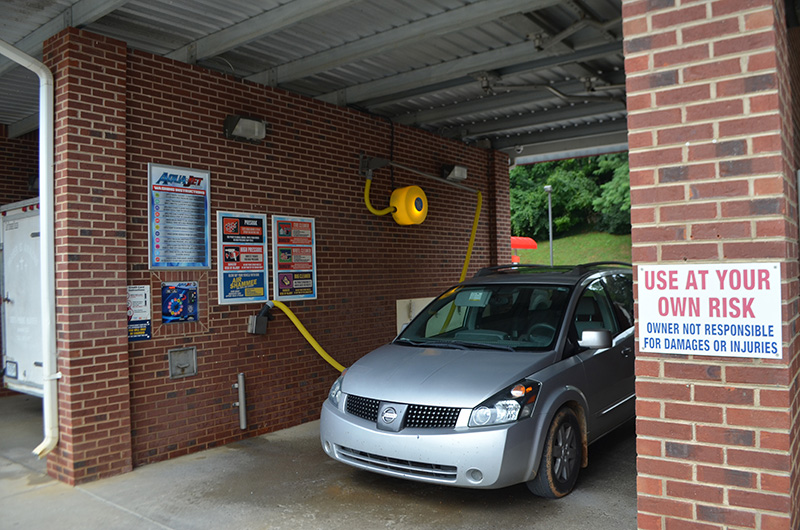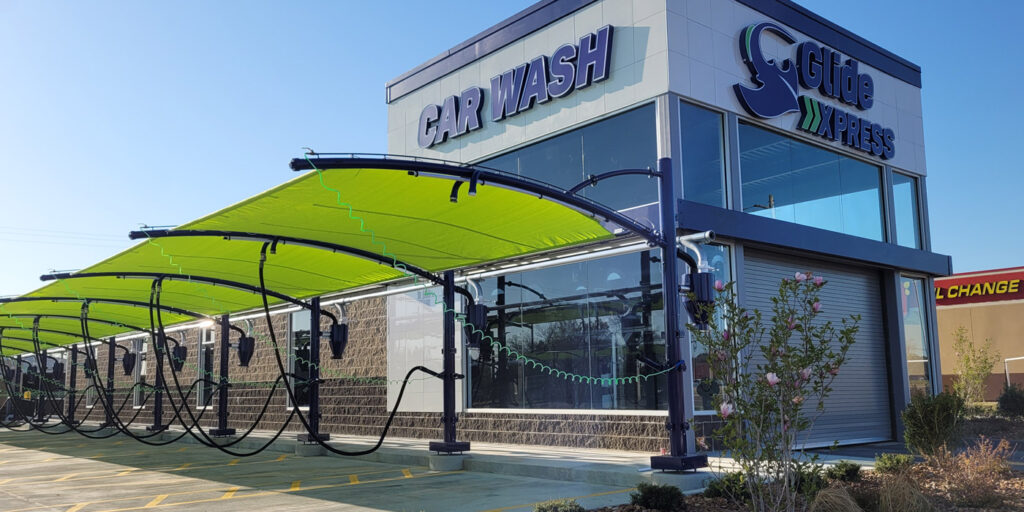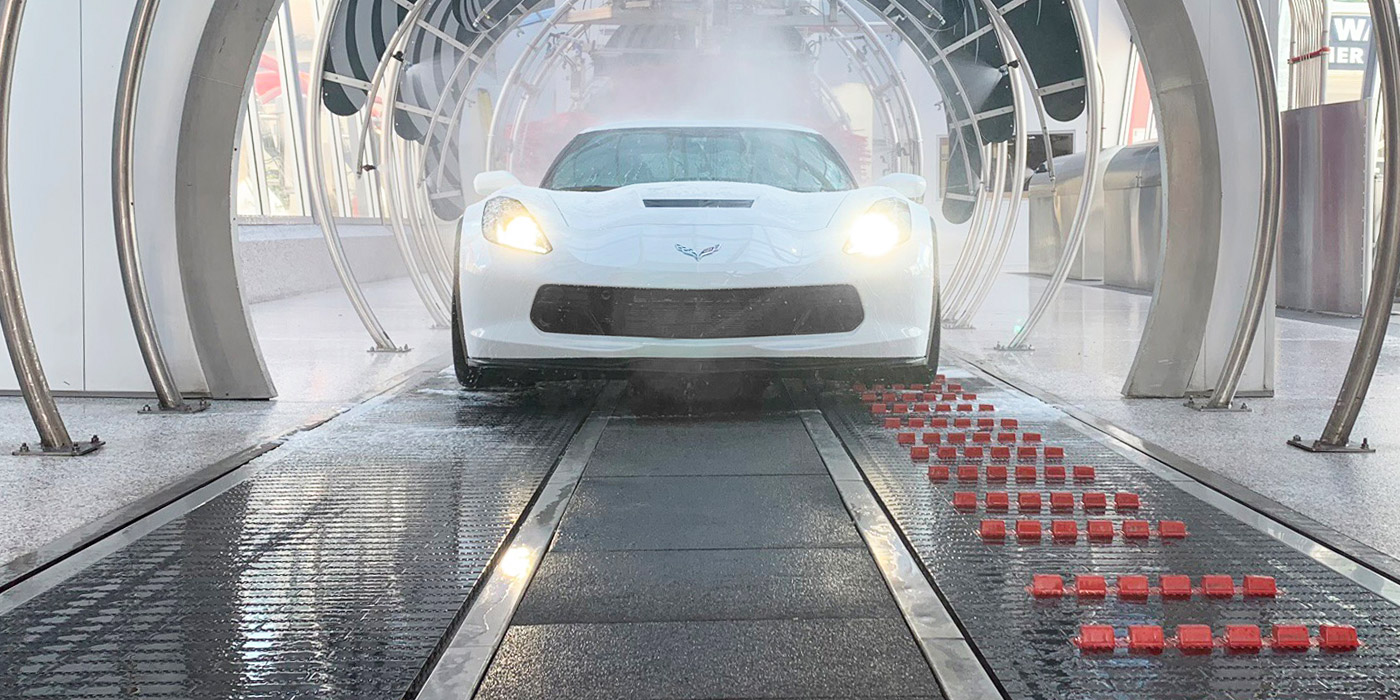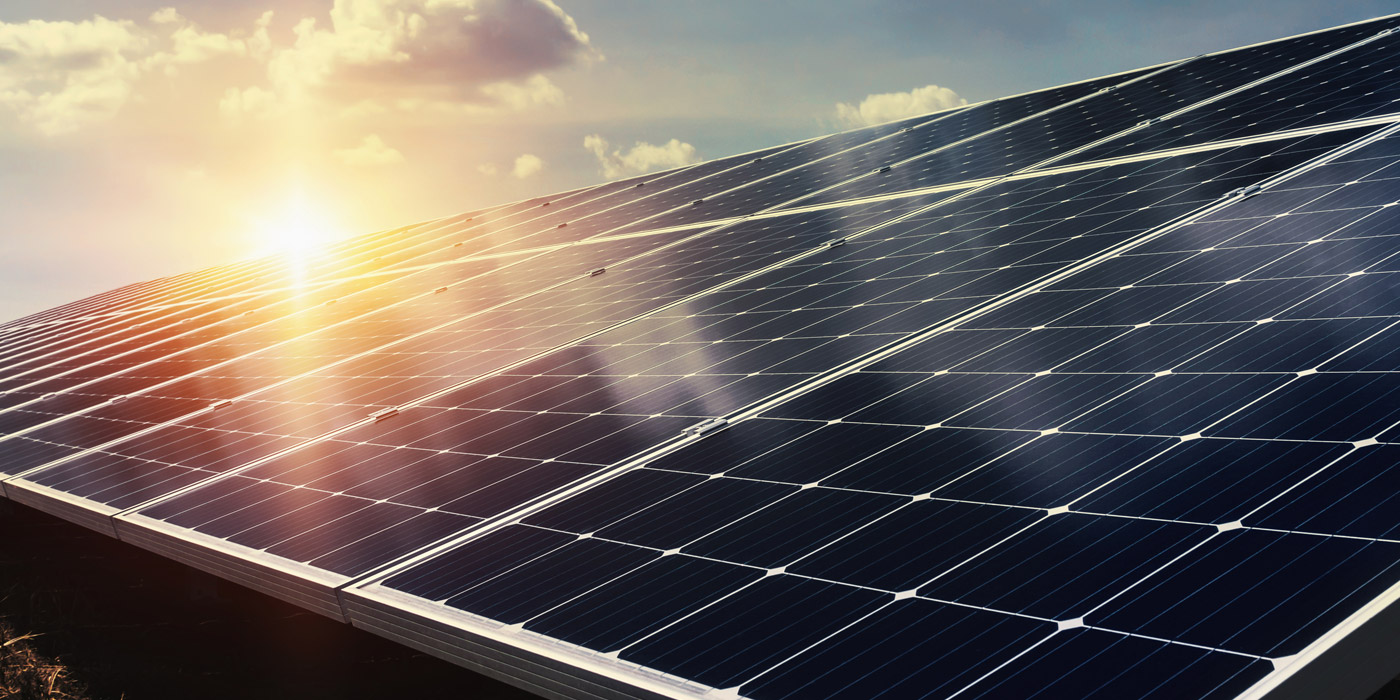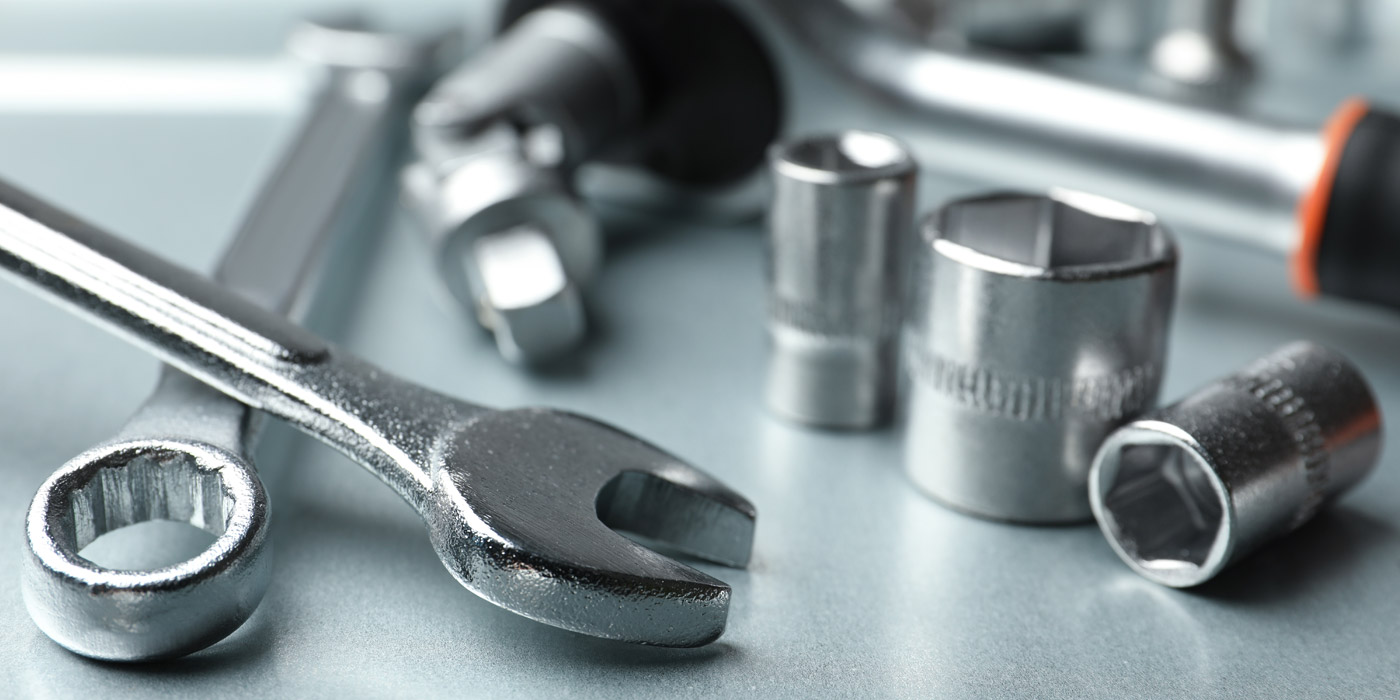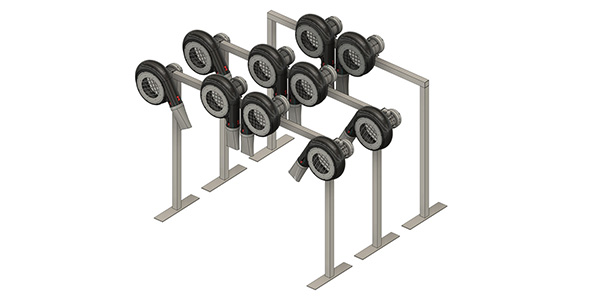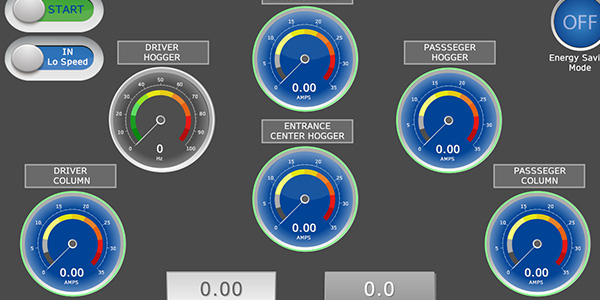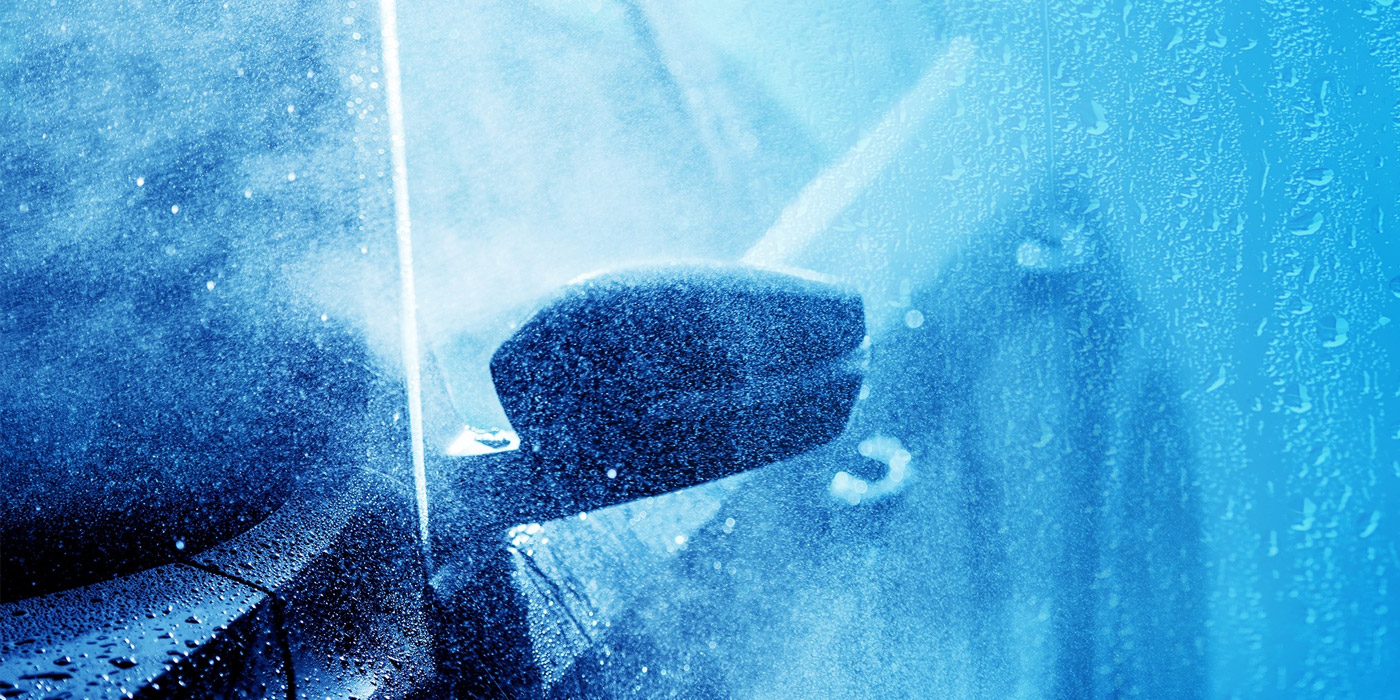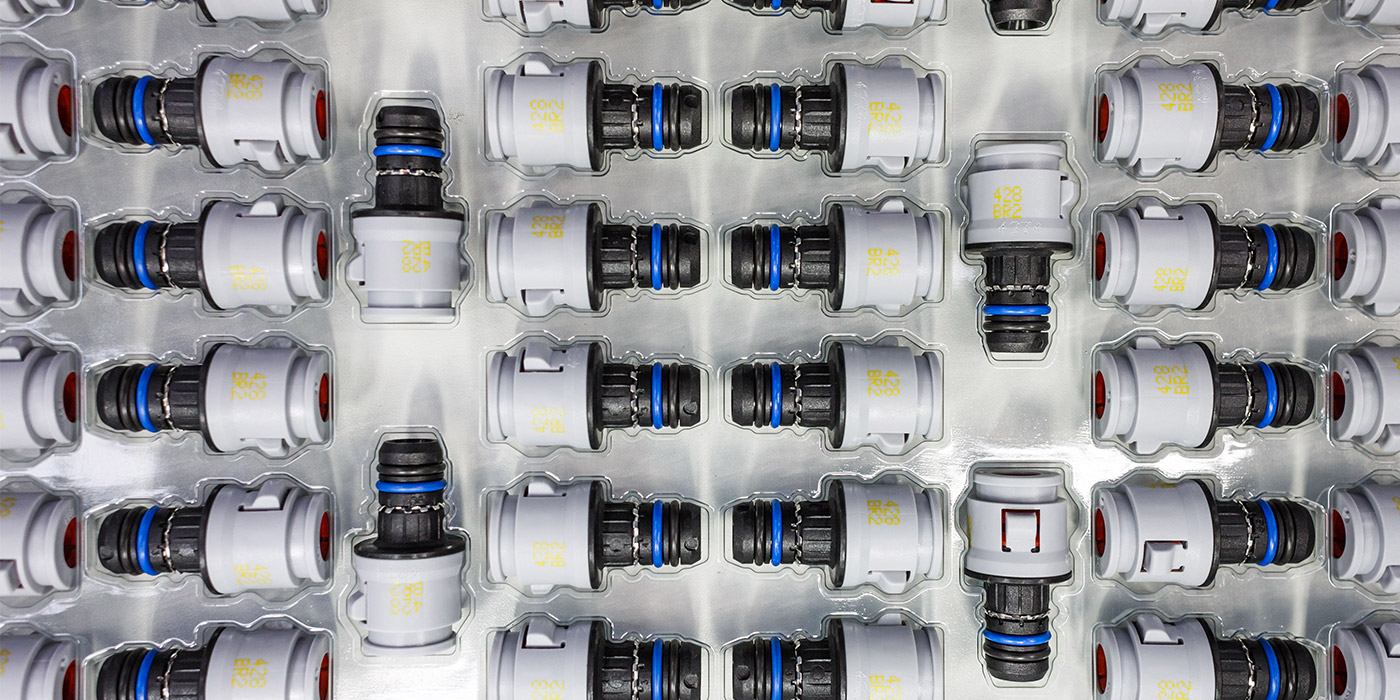Proper and thorough vehicle drying has proven to be an important reason that drivers now flock to automated carwashes instead of do-it-yourself driveway washing. Locations that output clean, dry and spot-free vehicles can count on being the most popular wash in each market, and often customer retention numbers will increase as wash performance improves. That said, providing an effective dryer option for customers who prefer self-serve locations has long been an industry challenge.
Thankfully, a number of dryer equipment options are now available to savvy self-serve operators. Much like the growth of upsell wash, protectant and rinse options, the array of drying equipment available for bay carwashes has expanded. Dryer equipment that allows customers to circle their vehicles and thoroughly dry all surfaces is now a viable option available for every bay and at every carwash operator’s budget.
As with any equipment purchase, an operator’s preparation, education and research will lead to selecting the best option for each wash location. Owners can learn which type of equipment has proven the most popular with self-serve facilities and find out more about modern add-on options for busy carwash bays. Further, experts can provide informed return on investment (ROI) and marketing tips for carwash operators interested in making this cutting-edge equipment addition.
Drying is important
Even in today’s competitive carwash market, there is a segment of customers that continues to drive the popularity of self-serve locations. The most important factor for these customers in choosing this wash format is the “do-it-yourself” aspect, according to Keith Lutz, vice president with Kleen-Rite Corp. This segment of carwash customers takes great pride in cleaning their own vehicles, and they frequently gain immense satisfaction from completing all the wash phases themselves.
Dale Reynolds, president of Carolina Pride Carwash Systems & Solutions, states that there are many customers who want to use automated carwash locations, but they are not comfortable going through automatic bays or tunnel carwashes. Some do not like wash equipment or friction materials coming in contact with vehicle surfaces, and some simply take personal pride in their vehicles and want to complete vehicle cleaning steps themselves.
Based on these customer traits, it is evident how the addition of drying systems to bays can help enhance the wash experience for dedicated self-serve customers, Lutz explains. Compared to at-home washing, where a customer basically has just soap and water available, a modern self-serve carwash will have a number of additional services and functions at the ready.
“So, having the dryer at the self-serve bay is another tool in the toolbox that allows the person to do a good job on his or her own vehicle,” Lutz says. “Everybody says they want a clean, shiny and dry car. These dryers enhance the ability to do that in the self-serve segment.”
Reynolds notes that thoroughly drying a vehicle after a customer has washed it will further help eliminate spots. Spot-free rinses have long been a popular choice at self-serve carwashes, but locations that have added dryers have seen a change. In some instances, the dryers are now used more than the spot-free rinse service when it comes to actual time sales in the bays.
DIY customers
Self-serve dryer systems that utilize handheld hoses basically work through a bay’s rotary switch or push-button meter box, Lutz states. In this example, the dryer is set up as an additional option, just like any other selections that are available in the bay. The customer can select the dryer as the final phase — he or she just turns the dial and then dries the vehicle — and this drying phase is part of the time for which the customer has already paid.
“Basically, as the operator adds that function, it increases the amount of time the customer is going to use the wash,” Lutz says. “More time equals more money, and it helps improve the customer’s wash experience.”
Reynolds agrees that most operators currently add drying as an additional function to the self-serve bay meter where the customers make their selections. In washes that have installed the systems, dryers have become a popular service at the end of the wash cycle. New construction self-serve washes are adding dryers to all bays, and many existing locations are adding them to more and more of their active bays.
The biggest technical improvement to this type of self-serve drying system has been the transition from three smaller motors to one larger motor. Lutz states that the larger motor can be run on three-phase electric power, so it drives down the system’s operating costs. The larger motors also have a longer life, so there’s less maintenance. These one-motor systems will produce warmer air as well, which will help the drying experience. Finally, the one-motor system has a more powerful airstream that makes it easier to dry the car.
Adding a system
According to Reynolds, the amount of time it takes to install a dryer system can vary based on the type of self-serve equipment used at a wash location. Another factor is whether an owner chooses to put the blowing producer on the roof, in the attic or mounted on the wall.
“Actually, mounting the equipment doesn’t take that long, depending on your situation,” Reynolds continues. “What might take a little more time is the electrical work; you have to run the power up to the producer.”
Lutz states that some self-serve washes could add a drying system into all their bays in a single day’s work.
When it comes to adding dryers, should a self-serve wash only install one system per location or opt for a dryer in every bay?
Reynolds has seen many operators “dipping their toe in the water” and buying just one dryer. Here, the operator will put a dryer in one bay to see how it goes as a test. Unfortunately, in many instances the operator will put the dryer unit in the wash’s slowest bay to see if it will increase revenue and boost that bay’s business.
“That’s probably not a good measure. If they want to test the system, they should really put it in their busiest bay so that it will get the most exposure,” Reynolds says. “Then, you can see how much more activity it will create in that bay.”
Lutz notes that the self-serve dryer systems actually started as a standalone installation, but companies found out quickly that the preferred method was to have it installed in every bay. It is a question of convenience to the customer, and having it on the meter box as an additional selection definitely increases usage.
“We certainly found very quickly that it needed to be in the bay to be most successful,” Lutz states.
ROI factors
The ROI time for self-serve drying systems varies depending on the investment made, Reynolds notes. In the self-serve washes that Reynolds runs, the dryers are available in every bay, and the dryers have become a much larger percentage of total sales.
“It’s running, right now, close to 8 percent of bay revenue in the self-serve bays,” Reynolds reveals. “So that’s generally a nice return.”
And when an owner compares dryers to other services, there are fewer costs associated with the equipment. Reynolds points out that there are no chemistry, water or sewer costs — just electric motor operation. Dryers have proven to be one of the least expensive services that a wash can provide when considering ROI.
Customer use of the dryer is generally priced the same as the other functions — whatever the set price is per minute at the wash. Lutz estimates that the typical return on a self-serve dryer investment is a year to a year and a half. “We have years of data at this point. For some people, it’s a little shorter or a little longer, but I would say on average 12 to 18 months,” Lutz says.
Marketing the service
To market the dryer option in the bay, Reynolds believes that the most effective step an operator can take is demonstration. After installation, the owner can activate the system for customers and show them how it works. This hands-on demonstration will make regular customers aware of and comfortable with the new wash option.
Next, a lot of owners hang banners and use different methods to promote the dryers on-site. Reynolds notes that one of the approaches taken in his operations is single-sign promotion in bays. Rather than displaying multiple signs, each bay has just a menu sign and then one individual marketing sign that is changed regularly. This focused marketing message then emphasizes different services that an operator wants customers to be attracted to at that particular time.
Generally speaking, the dryers have become widely used in warm climates and have also proven popular with motorcycle owners.
“I think their use is fairly widespread. They are used all across North America,” Reynolds concludes. “You get into the northern climates, and people need to dry out their windowsills so the windows don’t freeze. It’s a very popular item all across the country.”
Michael Rose is a freelance contributor.

